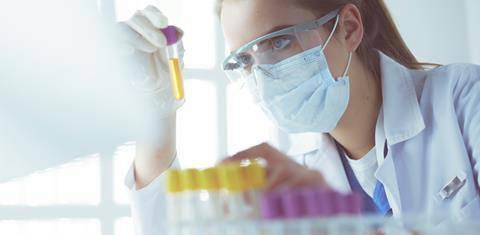Germany-based Fraunhofer Gesellschaft is an applied research organization that sets out to act as a driving force for the transformation towards a resilient and sustainable food and packaging industry, with a focus on three main strategic topics: health & wellbeing, bioeconomy & circular economy and safety & resilience. They recently released their annual report. We take a closer look at their work in the packaging field.

Fraunhofer works with companies in the areas of food and packaging, and develops new, bio-based functional materials as well as new packaging systems based on bio-based materials and recyclates.
Focus on plastics
Researchers work on new recyclable packaging systems such as monomaterial films or separable multimaterial packaging as well as processes for recycling of fossil and bio-based plastics. Fraunhofer’s lighthouse project “Waste4Future” sets out to increase energy and resource efficiency in the use of plastics, looking at new possibilities for recycling and preventing material loss and downcycling. Listen to Packaging Europe’s podcast, which we recorded on the occasion of the product launch.
The project investigates potential mechanical (melt extrusion, solvent-based purification and fractionation) and chemical (solvolysis, pyrolysis, gasification) recycling processes and testing them for their suitability for different compositions of plastic waste. By the time the project ends in December 2024, it will be possible to compare components made from old plastics against new materials.
The big topic of plastic waste also is tackled with an AI application hub for circular packaging supported by the German ministry of education and research. It consists of two Innovation Labs: KIOptiPack (working on design and production) and K3I-Cycling (working on closing the loop), involving a total of 51 partners from industry, science, and society. The common goal is to connect the value chain of plastic packaging as far as possible. To this end, the two Innovation Labs engage in a dynamic exchange of data and results.
Going forward, packaging within the EU will need to contain a minimum of 30% recycled materials. In order to use recycled materials safely on an industrial scale, material quality must first be standardized. KIOptiPack’s goal is to roll out, validate and put into application practical AI-based tools for successful product design and quality production methods for plastic packaging made from a high proportion of recycled materials. This links up with the development of a central network platform for value creation engineering. The tools developed in the project set out to target the entire value chain, including secondary raw materials, material and packaging development, process design and packaging production, as well as waste collection and treatment and consumption.
Furthermore, K3I-Cycling’s aim is the significant quantitative and qualitative improvement of material recycling of post-consumer plastic packaging waste, using an Artificial Neural Twin to develop a new, open, and standardizable AI interface. An Artificial Neural Twin is a fully differentiable representation of an entire system that can be used to optimise individual components in relation to that system. Sensory information along the material flow is captured as data. Consequently, relevant information can be collected across different sectors for a light packaging product pass. This enables digital networking of all stakeholders along the value chain.
In the area of chemical recycling, Fraunhofer has developed the CreaSolv® Process, which the institute says produces recycled plastic with virgin material properties. The solvent-based process removes contaminants and additives that reduce the quality of the recycled plastic produced by conventional recycling processes. This means that a wide variety of pure plastics can be recovered from mixed plastic waste which can be reused for plastic packaging products. The process can also be used to eliminate impurities and odours.
Shelf life and novel packaging materials
Food shelf life is determined by a range of different factors, including packaging and storage conditions. Fraunhofer works on judging shelf life through storage testing, chemical, physical, microbiological and sensor analyses. The institute develops tailor-made concepts to boost food shelf life, zooming in on product specific spoiling factors. In addition, to increase process and product safety, Fraunhofer performs microbiological validation of hygienic filling machines and evaluates performances of surface and air disinfection and supports their development.
Sustainability is a major trend and has shaped packaging development. Fraunhofer supports companies in the development of safe packaging materials. In the course of their research, Fraunhofer design and evaluate novel packaging materials from recycled or bio-based raw materials such as paper and biopolymers, focusing for example on the use of residual materials as a basis for new materials and coatings. Furthermore, Fraunhofer develop and optimise recyclable films and films made from recycled content for packaging and technical applications according to individual requirements. With the help of new technologies, new material combinations and barriers are tested. Customers can also validate new developments before deciding to invest.
Elsewhere, within the framework of looking at food supply chains and smart farming, Fraunhofer also investigates the use of paludicultures (farming on rewetted peat) for the creation of bio-based packaging, analysing potential raw materials, processing procedures and material characterisations.
Finally, addressing the trend of digitalisation, Fraunhofer is working on addressing the issue of skilled labour shortages. The teams work on digital future technologies for adaptive process control and develop customised operator assistance systems for processing and packaging machines based on the combination of knowledge and machine learning.
If you liked this story, you might also enjoy:
The Brief: How viable is biorecycling for plastics?
Report: How the top brands are progressing on packaging sustainability
The Brief: Using ocean-bound plastic in packaging – how, why and should we?


















No comments yet